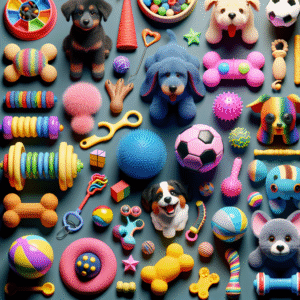
Crate training is a valuable tool for dog owners, providing a safe and comfortable space for your canine companion while aiding in house training and reducing separation anxiety. However, achieving success with crate training requires a structured and consistent schedule. This article will guide you through an ultimate dog crate training schedule designed to help you achieve faster and more effective results.
Understanding the Basics of Crate Training
Before diving into the schedule, it’s essential to understand the principles behind crate training. A crate serves as a den-like environment where your dog can retreat for rest and security. When used correctly, it can help with house training, prevent destructive behavior, and create a safe space for your dog during travel or when you’re away.
Choosing the Right Crate
The first step in crate training is selecting an appropriate crate. It should be large enough for your dog to stand, turn around, and lie down comfortably, but not so large that they can eliminate in one corner and sleep in another. Crates come in various materials, including wire, plastic, and fabric, each with its benefits.
Creating a Positive Association
Introduce the crate to your dog by making it an inviting space. Place a comfortable bed or blanket inside and add a few of your dog’s favorite toys. Initially, leave the crate door open and encourage your dog to explore the crate at their own pace. Use treats and praise to reinforce positive associations with the crate.
The Ultimate Crate Training Schedule
Consistency is key in crate training. Following a structured schedule will help your dog understand what to expect and make the training process smoother. Here’s a step-by-step guide to the ultimate crate training schedule:
Week 1: Introduction and Short Periods
During the first week, focus on introducing your dog to the crate and building positive associations. Follow these steps:
- Day 1-2: Encourage your dog to explore the crate with treats and praise. Feed your dog meals near the crate, gradually moving the bowl inside.
- Day 3-4: Begin closing the crate door for short periods (5-10 minutes) while you’re nearby. Gradually increase the time as your dog becomes more comfortable.
- Day 5-7: Extend the crate time to 15-30 minutes, using toys and treats to keep your dog occupied. Ensure your dog is calm before opening the door.
Week 2: Increasing Duration and Distance
In the second week, work on extending crate time and introducing brief periods of separation:
- Day 8-10: Gradually increase crate time to 30-45 minutes. Start stepping out of the room for short intervals, returning to reassure your dog.
- Day 11-12: Extend your time out of the room while your dog is crated to 1 hour. Use a baby monitor or camera to observe your dog’s behavior.
- Day 13-14: Aim for 1.5 to 2 hours of crate time, gradually increasing the duration of your absences.
Week 3: Longer Periods and Nighttime Crating
By the third week, your dog should be more accustomed to the crate. Begin incorporating longer periods and nighttime crating:
- Day 15-17: Increase crate time to 2-3 hours during the day. Introduce nighttime crating by placing the crate in your bedroom.
- Day 18-19: Extend daytime crate sessions to 3-4 hours. Gradually move the crate out of the bedroom if desired.
- Day 20-21: Aim for 4-5 hours of crate time during the day. Ensure your dog has plenty of exercise and bathroom breaks before crating.
Week 4: Full-Day Crating and Troubleshooting
By the fourth week, your dog should be comfortable with extended crate sessions. Use this time to troubleshoot any issues:
- Day 22-23: Gradually increase crate time to 5-6 hours. Monitor your dog’s behavior for signs of stress or anxiety.
- Day 24-25: Work towards 6-7 hours of crate time. Address any whining or barking by ensuring your dog is exercised and has had a bathroom break.
- Day 26-28: Aim for full-day crating if needed, ensuring breaks for exercise, bathroom, and mental stimulation.
Troubleshooting Common Crate Training Issues
Crate training can come with challenges. Here are some common issues and solutions:
Whining and Barking
If your dog whines or barks in the crate, avoid immediately letting them out, as this reinforces the behavior. Ensure your dog has had sufficient exercise and bathroom breaks. Gradually increase crate time and use interactive toys to keep them occupied.
Refusal to Enter the Crate
If your dog is reluctant to enter the crate, try using high-value treats or toys as incentives. Never force them inside. Allow them to explore the crate at their own pace.
Separation Anxiety
Certain dogs may experience separation anxiety when crated. Gradual desensitization and positive reinforcement can help. Consult a professional trainer or behaviorist for severe cases.
Maintaining Success and Long-Term Crate Use
Once your dog is comfortable with the crate, maintain their positive association by continuing to use it regularly. Incorporate the crate into your dog’s daily routine, using it for rest, travel, and when you need to leave the house.
Consistency is Key
Consistency is essential in crate training. Continue to follow a routine, providing regular bathroom breaks, exercise, and mental stimulation. Over time, your dog will view the crate as a safe and comfortable space.
Gradual Adjustments
As your dog becomes more comfortable with the crate, you can make gradual adjustments to their schedule. Lengthen crate times as needed, but always ensure your dog has sufficient exercise and bathroom breaks.
Conclusion
Crate training can be a rewarding experience for both you and your dog when approached with patience and consistency. By following this ultimate crate training schedule, you’ll set your dog up for success, helping them feel secure and comfortable in their crate. Remember to tailor the schedule to your dog’s individual needs and always prioritize their comfort and well-being.
With dedication and a structured approach, crate training can become a positive and beneficial part of your dog’s life, ensuring they have a safe and comfortable space to call their own.
#ChatGPT assisted in the creation of this article.






